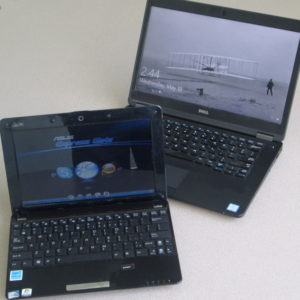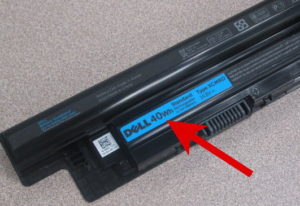“What computer should I buy?” is a question that comes up frequently. When running on  solar power, you have all the usual trade-offs plus you also need to watch power consumption. Computer models come and go so fast we can’t review them all, and any specific recommendations are outdated by the time we give them. Also, you may have deeper pockets than the next guy, and different ideas on what is a reasonable compromise. We usually stick with the Dell Latitude series or Lenovo Thinkpad series. Check out our blog section for recent posts on recommended laptops. But if those models don’t meet your needs, here are some things to consider when shopping:
solar power, you have all the usual trade-offs plus you also need to watch power consumption. Computer models come and go so fast we can’t review them all, and any specific recommendations are outdated by the time we give them. Also, you may have deeper pockets than the next guy, and different ideas on what is a reasonable compromise. We usually stick with the Dell Latitude series or Lenovo Thinkpad series. Check out our blog section for recent posts on recommended laptops. But if those models don’t meet your needs, here are some things to consider when shopping:
- Ask the local computer repair guy where you will be working! He may have particular brands or models he likes and can get parts for or tell you to avoid.
- Desktop computers use more than twice the power of a similar laptop, but laptop power use also varies widely. Don’t use desktop computer for solar powered use, and pay attention to power consumption when shopping for laptops.
- Larger screens use energy faster, so you probably should choose the smallest screen size you can live with.
- The latest generation Intel CPUs have significantly lower power consumption than earlier CPUs, so in this case, newer is better. Within a “generation” of CPUs Intel will offer several models like Core i3, Core i5, and Core i7. The higher numbers are faster and more expensive and use more electrical power. Generally, you want to choose the slower i3 or i5 processor to save on power. (And money) AMD has a similar selection of CPUs with newer “Generations” being lower power than previous ones, and within a generation, the cheaper, slower CPUs being best for low power consumption.
- Anything called an “Ultrabook” is likely going to have very low power consumption because they’re designed to be thin and light (which means a small battery) while striving for long run times. Usually they are very pricey, but there are also some “entry-level” 13″ and 14″ notebook models that can have very low power consumption and prices under $600.
- Ruggedness and availability of spare parts are critical. Bargain brands aren’t a bargain if your computer needs to be replaced after 3 months. We’ve had good success with, and like the build quality of Lenovo’s Thinkpad line of computers, Dell’s Latitude line, and to a lesser degree Asus. Before you buy a computer, see if you can purchase a replacement keyboard for it. Some may even want to buy a replacement keyboard in advance, since the keyboards seem to malfunction quickly in field conditions.
- If you plan on powering your computer on DC only, for instance with our Villager-III or Half-Pint battery packs or a 12 V lead-acid power system, make sure you can get a 12 V dc “car adapter” or power tip to fit it. Specifically be cautious about HP and Apple laptops and tablets, since some models will not work with after-market DC adapters, and the manufacturer doesn’t make a 12 V “car adapter” for them. Research the availability of a car adapter for your chosen model before buying it.
- Dell laptops need a car adapter specifically made for Dells which talks to the computer over the center pin. Dell sells them, and PWR+ makes a good aftermarket adapter that works with Dell laptops. (It’s better quality than the official Dell adapters)
- Lastly, but most importantly, you’ll want to know the average power consumption of your laptop, and the number of hours each day that you plan to run it. This determines your battery size and solar panel size. If you’re going to work 8 hours each day, then also watch movies for 4 hours in the evening, it will use twice as much energy as when you work for 6 hours during the day then turn it off.
Estimating average power consumption of a particular computer
You can guess at the number of hours per day you will be using your computer, but where can you find the average power draw of a particular computer model? Nobody publishes that! The watt rating on the power brick is probably at least 3 times the average power consumption, so you can’t use that. Here’s how to estimate average power consumption.
- Look on notebookcheck.net for a review of your laptop candidate. Near the bottom they usually list battery run time while doing a WiFi web surfing test. Divide the watt-hour rating of the battery by the number of hours it lasted in the WiFi web surfing test to get an average power draw in watts. 6.5w or less is a good candidate for running on a Half-Pint system. A Villager-III can support laptops with much higher power usage.
- No review on notebookcheck.net? Check other third party sites; look for reviewer measurements of run time on battery power.
- Be aware that different CPUs or hard disks can make a significant power difference. Core-M CPUs will use less power than a Core i3, and Core i5 will use more, and Core i7 the most. Web browsing probably uses a similar amount of power as linguistic work use reviewer’s run times while surfing if you can find it. (If you can’t find any info except the manufacturer’s run-time estimate, take 70% of that. They exaggerate! Also watch out — they may claim run time with an optional larger battery.)
- As of spring of 2022 there are many very capable laptops that can average less than 7 watts while doing light work.
Here’s a real-world example:
I like the looks of the Thinkpad T470 Ultrabook. It is rugged, has a 14″ screen and seems to have long run-times. I’ll choose the lowest power CPU they offer — the i5, and I want the SSD hard drive for performance and low power consumption. What can I expect for average power consumption? notebookcheck.net reviewed a T470 with the i5 processor and SSD, perfect! Their test model had two 24 Wh batteries installed for 48 Wh total. They claim it ran 7 h 18 min in their WiFi surfing test. This should be similar to the CPU use while doing linguistic work. I’ll round down to 7 hours and confirm this is reasonable based on other reviews online. My estimated average power draw comes to 48 Wh divided by 7 hours = 6.8 watts. This can easily run on a Villager-III system, which is designed for 10 W average, and could possibly even run on a Half-Pint with 45W or more of panels.
Run a simulation with our Online Test Drive tool
![]() For more detailed information see this blog post Davis wrote evaluating a laptop powered by a Half-Pint solar power system. This tool can visualize the laptop run time you will get with different weather conditions and solar panel or battery sizes.
For more detailed information see this blog post Davis wrote evaluating a laptop powered by a Half-Pint solar power system. This tool can visualize the laptop run time you will get with different weather conditions and solar panel or battery sizes.